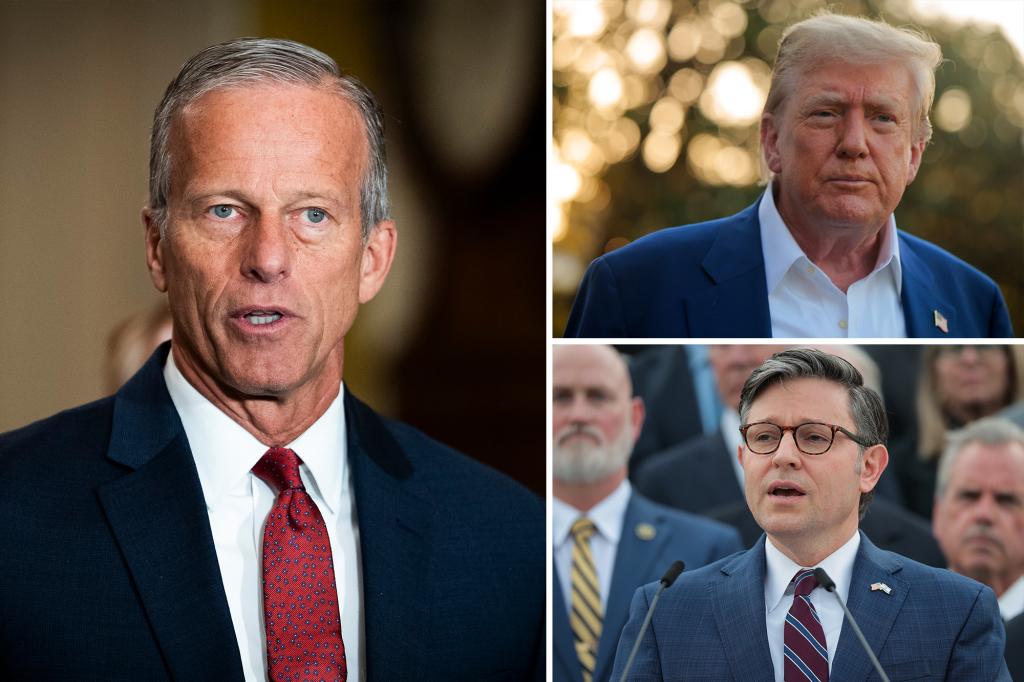The Trump White House claimed Wednesday that the Senate version of the One Big Beautiful Bill Act will reduce the federal deficit by between $2.1 trillion and $2.3 trillion over the next decade — thanks to tax cut-driven economic growth.
Members of the White House Council of Economic Advisers (CEA) produced the new analysis by leaning on a draft text released last week by the Senate Finance Committee, which remains in flux due to ongoing negotiations.
“Making the successful Trump tax cuts permanent will provide certainty for American job creators to spur domestic economic activity and invest in workers,” Senate Finance Committee Chairman Mike Crapo (R-Idaho) said in a statement in response to the new analysis.
“With incentives for businesses to research, build, and innovate in America, these tax provisions will grow our economy the right way.”
The CEA also estimated an even larger deficit reduction when accounting for other Trump policies — predicting that tariffs and other spending cuts would boost federal coffers by $3.3 trillion, while regulatory rollbacks and energy reform would shave up to $3.7 trillion off the deficit.
However, Trump’s tariffs are not part of the One Big Beautiful Bill Act and is subject to litigation as well as negotiations.
Additionally, the CEA appears to have factored in discretionary spending cuts that are not included in the megabill but that the White House is pursuing via the regular appropriations process this coming fall.
Nonpartisan estimates warn the deficit will increase
The CEA analysis is far more optimistic than most conventional analysis — known as “scoring” — of the package.
Earlier this month, the Congressional Budget Office concluded the House version of the One Big Beautiful Bill Act would add $3 trillion to the deficit over the next decade.
Even when accounting for economic growth, the CBO found that the deficit would increase by about $3.4 trillion over the next 10 years due to soaring costs of interest on the US national debt.
GOP leadership has long brushed aside the CBO’s scoring of its legislation, arguing that the organization overstates the impact of tax cuts on deficits.
Now the CEA has given the White House and GOP leadership more ammunition against fiscal hawks such as Sen. Ron Johnson (R-Wis.), who have raised concerns about the deficit and pointed to the CBO’s estimates.
Economic benefits
Beyond its deficit reduction projections, the CEA also estimated that Trump’s marquee agenda package will be a boon for economic growth and business development.
The economic body estimated that the megabill will boost real investment by between 7.3% and 10.2%, increase GDP by 4.6% to 4.9%, increase real wages by at least $4,000 and as much as $7,200, and create or save between 6.9 and 7.2 million.
Senate Republicans are scrambling to advance the One Big Beautiful Bill Act by the end of this week after Trump publicly warned them not to break for the July 4 recess until their work is done.
But many hurdles remain in the way, with fiscal hawks such as Johnson and Sen. Rand Paul (R-Ky.), demanding significant deficit reduction in the final product.
Others, such as Sen. Josh Hawley (R-Mo.), have raised concerns about looming Medicaid cuts.
There are also concerns that the Senate could make too many changes to the bill, making it unpalatable to House Republicans.
The Senate Finance Committee’s initial text spiked a carefully negotiated House deal to raise the state and local tax (SALT) deduction cap to $40,000. Republican representatives from high-tax states like New York, New Jersey and California have vowed not to vote for any bill that does not include the cap.
Fiscal hawks in the House have also grumbled over plans to reduce cutbacks in green energy subsidies.
While GOP leadership has hoped to get the bill to Trump’s desk by Independence Day, some lawmakers are uncertain that timeline will hold.
“I am confident that we get the bill done. Is it by the Fourth of July? Maybe,” Sen. Joni Ernst (R-Iowa) told The Post Wednesday. “That is a target date. And I think we will drive really, really hard to get to that target date.”
Read the full article here


